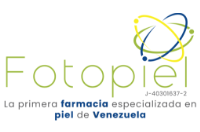Respuesta clínica a las distintas modalidades terapéuticas antifúngicas en pacientes hospitalizados con onicomicosis
Palabras clave:
onicomicosis, terapia, fluconazol, clotrimazol, onychomycosis, therapy, fluconazole, clotrimazoleResumen
Antecedentes: La onicomicosis (OMC) es la invasión del complejo ungueal por hongos. Su tratamiento no es fácil debido a las diferentes susceptibilidades de los hongos a los antifúngicos. Objetivo: Analizar si existe diferencia en la respuesta clínicas a las distintas modalidades terapéuticas de OMC disponibles para los dermatólogos en pacientes hospitalizados en el C.H.Dr.A.A.M.(Complejo Hospitalario Dr. Arnulfo Arias Madrid). Materiales y métodos: estudio analítico, prospectivo, longitudinal, aleatorizado, abierto con una muestra representativa de 202 pacientes hospitalizados con lesiones clínicas de OMC. Se realizaron cultivos por hongos y se excluyeron los pacientes con cultivos negativos. Los pacientes restantes fueron divididos en 4 grupos de tratamiento (tópico tradicional, tópico modificado, sistémico y combinado) y fueron seguidos por un año. Cada tres meses se determinó la velocidad de crecimiento de la uña libre de enfermedad (VC). Se hizo el análisis de "intención de tratar" (IT) y "según el protocolo" (SP). Se usó ANOVA y Kruskal-Wallis para determinar significancia. Resultados: sólo 28 pacientes regresaron a la cita de los 3 meses para obtener la primera medición de VC. Según el análisis de IT, la mayor VC (7.67 ± 3.51 mm/año) se obtuvo en el grupo de tratamiento sistémico (fluconazol oral exclusivamente) y esta VC fue significativamente mayor que las de los tratamientos tópicos tradicional (p<0,01) y modificado (p<0,05). El análisis SP no reveló diferencias estadísticamente significativas. Conclusiones: las terapias sistémicas y combinadas con fluconazol son más efectivas que las terapias tópica tradicional (clotrimazol 1%) y tópica modificada (clotrimazol 1% con itraconazol 0.2%) para el tratamiento de la OMC.Abstract
Background: Onychomycosis (OMC) is the invasion of the nail complex by fungi. Its treatment isn't easy because of different susceptibilities of fungi to the treatment. Objective: to analyze if there is a difference between the clinical responses to the different therapeutic modalities available to dermatologists for the treatment of OMC in hospitalized patients al C.H.Dr.A.A.M. (Complejo Hospitalario Dr. Arnulfo Arias Madrid). Materials and methods: analytic, prospective, longitudinal, randomized and open study with a representative sample of 202 hospitalized patients with lesions clinically suggestive of OMC. Culture for fungi was performed and patients with negative cultures were excluded. The remaining patients were randomized into four treatment groups (tradicional topical, modified topical, systemic and combined) and were followed for a year. The growth velocity of the nail free of disease (VC) was determined every three months. The analysis was carried out with the intention to treat (IT) and the as protocol (SP) methodologies. ANOVA and Kruskal-Wallis tests were used to determine significance. Results: only 28 patients returned to the three month appointment to optain the first measure of VC. According to the IT analysis, the highest VC (7.67 ± 3.51 mm/year) was obtained in the group of patients receiving systemic treatment (fluconazole exclusively) and it was significantly higher than the VC of the tradicional topical (p<0.01) and the modified topical (p<0.05) treatment groups. The SP analysis wasn't statistically significant. Conclusion: systemic and combined therapies with fluconazole are more effective than tradicional topical (clotrimazole 1%) and modified topical therapy (clotrimazole 1% plus itraconazole 0.2%) for the treatment of OMC.
Descargas
Número
Sección
Artículos
Licencia
Publicado por la Sociedad Venezolana de Dermatología Médica, Quirúrgica y Estética







